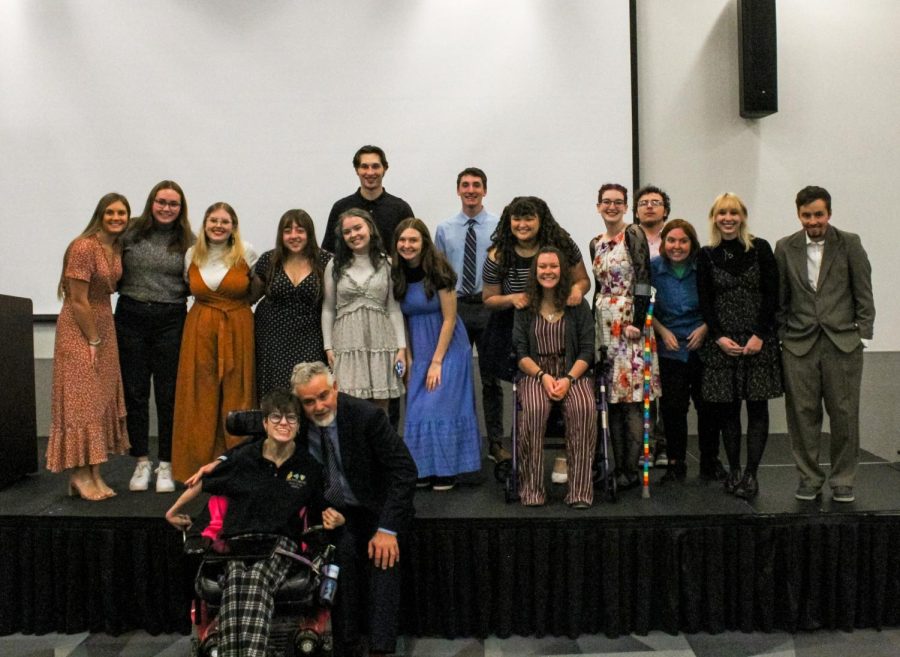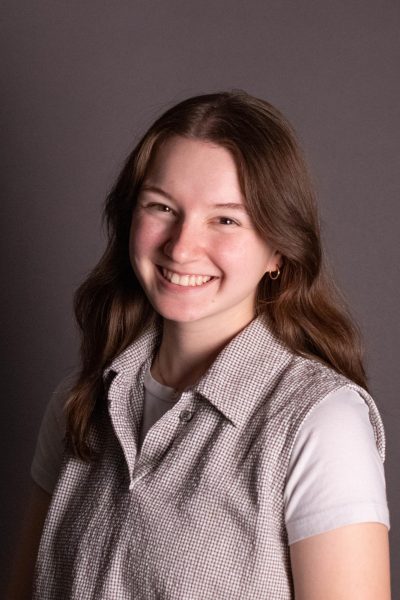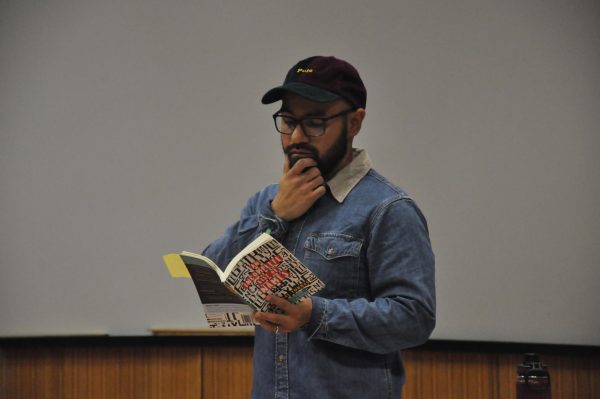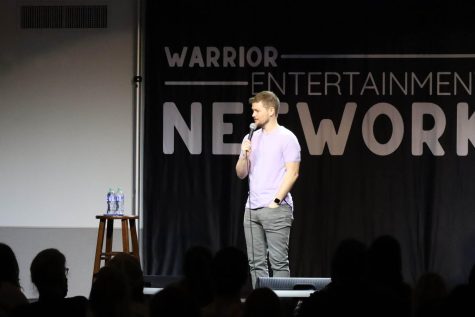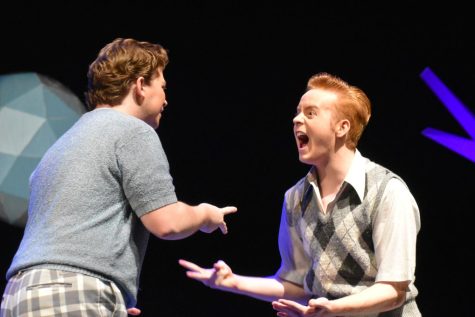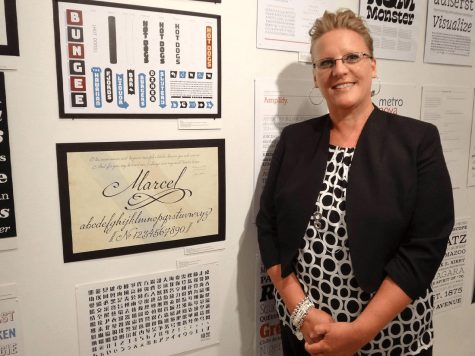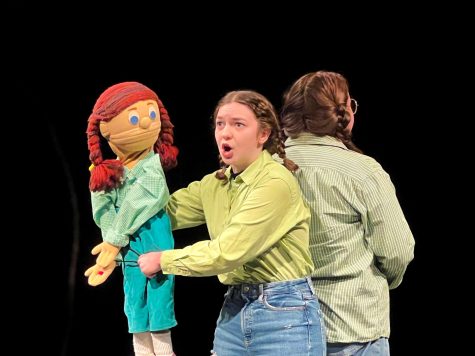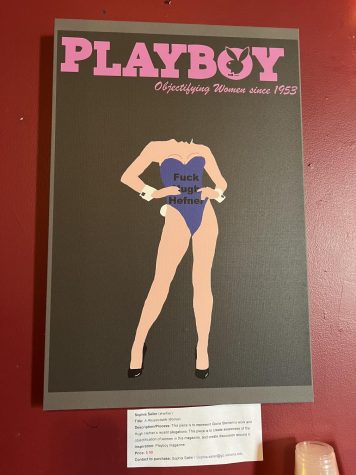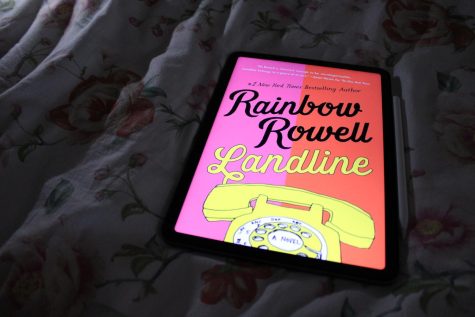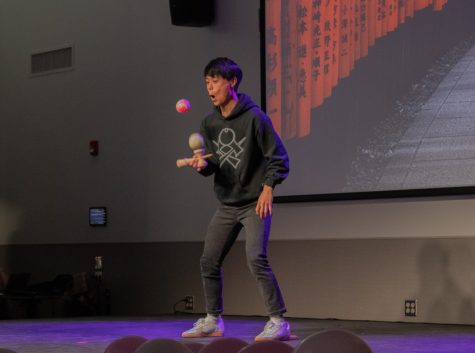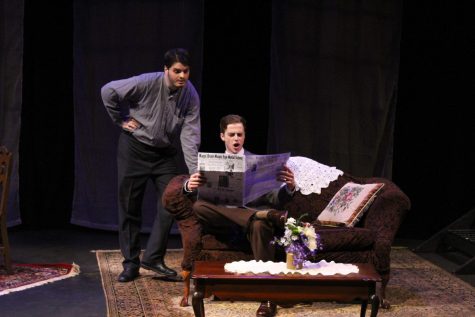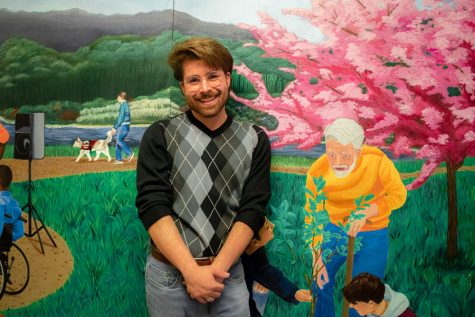Disability culture art show de-stigmatizes and celebrates disability
Winona State University’s CMST 290 class, Disability Communication and Culture, put on their bi-annual Disability Culture Celebration Art Show. This showcased artwork made by people with disabilities. The event also hosted a keynote speaker.
November 8, 2022
Across all forms of intersectional identities, disability is an identity that is often treated differently than others. Disability does not seem to be covered in academic courses; Winona State University’s CMST 290 course, Disability Communication and Culture, actively goes against these precedents by discussing and deep diving into the daily lives of people with disabilities.
The largest project in the CMST 290 course is the bi-annual Disability Culture Celebration Art Show, which showcases artwork made by people with disabilities and a keynote speaker. It took place on Thursday, Nov. 3, 2022 at 7 p.m.. Students had the goal of going back to their home communities and connecting with people they knew who have disabilities.
Kelly Herold, the professor for Disability Communication and Culture, commented on the various benefits people can receive by connecting with people from home.
“Support is sort of the end of a new understanding of culture where we go from recognizing oppression and things that people of color and women and other minority groups have gone through,” Herold said.
Every student in CMST 290 played a part in setting up and preparing for the Disability Art Show. Whether it was making the fliers for the event, reaching out to people to invite them or being in charge of PR, every student had a role in putting together every moving piece of the event.
Each student had the opportunity to connect with someone in their lives who has a disability and to collect artwork from them. Over twenty art pieces were shown at the event, showcasing family members and family friends’ paintings of their rooms, various foods and Halloween pumpkins.
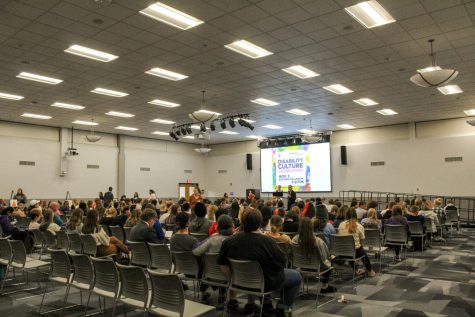
Caroline Tison, a freshman studying pre-law and political science and a student in CMST 290, expressed her hopes for the event, stating that she wants people to see people with disabilities as people, rather than a spectacle.
“Being disabled on a college campus is weird, because I feel like young people aren’t as used to disability; when I hang out with older people, they all get it,” Tison stated. “They’ve already used their walker, they’ve already had their hip replaced. But I’ve noticed that on a college campus, especially people don’t understand and they tend to stare and or completely pretend you don’t exist.”
Students in CMST 290 made it clear that their collective hopes for the event included an increased level of understanding of people with disabilities and the nuances that surround that, how to communicate effectively with people with disabilities and the overall humanization of disability in general.
Abbie Jaeger, another student in the class, provided insight on why an art show really pushes the humanization of people with disabilities in a way that other forms of communication may be unable to accomplish.
“Art and music are of those things that are probably the most universal languages,” Jaeger said, “and it really just sort of humanizes people with disabilities and just sort of shows that all people without disabilities, people with visible disabilities and people with invisible disabilities are real people and deserve to have their art and their culture [shown equally] in their community.”
One of the largest portions of the event was by Lydia Dawley. Lydia Dawley has mixed Cerebral Palsy and graduated from the University of Wisconsin-Whitewater with a Bachelors of Science in Liberal Studies with special interest in Communication Sciences and Disorders. Dawley is also the founder of her company “Click. Speak. Connect.” and consults with speech-language pathologists.
Dawley’s story was not only inspiring, but witty, eye-opening, sometimes heart-wrenching and also laugh-out-loud funny. Dawley greatly exemplified the idea that people with disabilities are just like people who are able-bodied and that “disability is natural,” which is a phrase used often in the CMST 290 class.
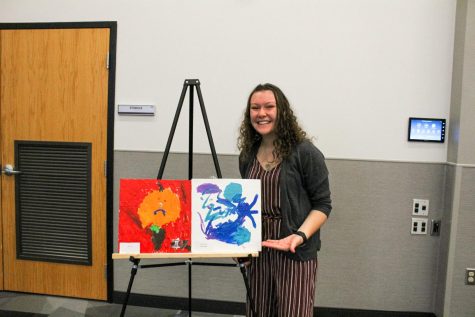
Dawley shared various stories about her difficulties and successes on a college campus, as well as some of the best and hardest times in her life. Through speaking with a computer-generated pre-recording, she captivated the audience throughout the entire period.
“I feel I was put on Earth to make a difference,” Dawley said. “My goal is to teach people to see what’s on the inside of a person and not to focus on the physical things. I hope to encourage others to find their voices and let the world hear their stories.”
Around two hundred people showed up to the Disability Culture Celebration, which made it a full house in the Kryzsko Ballroom. Both an awareness of Disability Culture and the communications 290 class were promoted throughout the event. An importance on de-stigmatization of disability was emphasized, along with the understanding that the event’s purpose was to celebrate people with disabilities rather than showing pity.
“It’s not about pity and feeling bad for people with disabilities,” Tison stated. “It’s a celebration and just like letting people know that we exist, and that we’re just like everyone else.”























































